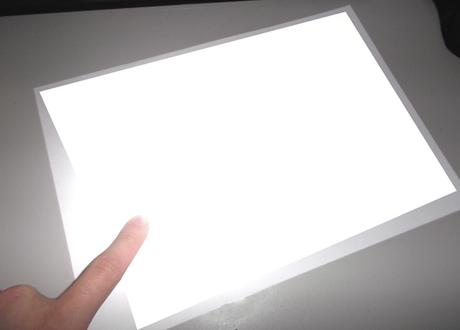LightPaper: The latest development of LED lighting
Please Subscribe to our YouTube Channel
Recently we saw some advances in the technology that not only surprised us but also amazed, although it may seem that everything is already invented, but there is always a new technology that dismantled our these views. And that is precisely what has done by a business girl Rohinni combined with her partners using LightPaper.
They have been working on large possibilities (untapped) of the LED lighting and the search for new materials to create a type of printable paper with LEDs.
What is LightPaper?
There are still few details available about the functioning of LightPaper, but what we do know is that basically this material is produced by a printer, which is placed with a mixture of ink and LED lighting on a conductive surface of electricity, whose protection is performed by placing between two protective layers which are sealed to prevent contact with the outside elements.
The elements that are integrated into LightPaper are so small, that the end result is as thin as a sheet of paper, hence its name as well as its motto is: “the thinnest light paper of the world”.
It is more like the LED panels with OLED technology that exists in the market, but simply tries to make ultra-thin model of LED panels, which currently are used for next-generation TVs.
What applications can have this kind of LED lighting?
It’s still a mystery, although the potential is imaginable that can have such material. Above all it is hoped that this material is part of innovative designs for new electronics.
The decor is another sector where LightPaper occupies highest point since today the conventional LED lighting plays an important role in production environments as a decorative element spaces (home, garden, swimming pools).
What appears is that its creators for now rules out the use of this new technology on world television screens, which is in the quest to make their thinner systems. There is some chit chatting in the market for its introduction in late 2015.
